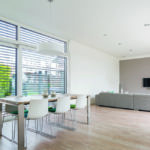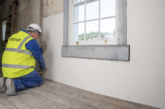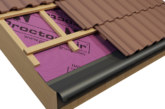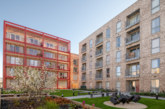Internal paints and plasters have an all-important role to play in a building’s aesthetic make-up. These materials are also known to affect interior air quality, which in-turn, could have a detrimental influence on the occupier’s health. Nikolaos Mantelis reports.
In local authority buildings of multiple occupancy the composition of internal walls, floors and ceilings is crucial, particularly when you consider the potential for issues such as damp. In the past, the focus was mostly on the composition and appearance of building exteriors. Now, designers are paying just as much attention to the interior fabric, and how the specification of quality insulation, internal paint and plasters can help create comfortable, healthy interiors for the long-term wellbeing of the occupants.
Pollutants in buildings commercial and domestic range from volatile organic chemicals (VOCs) and emissions from products, to gases such as nitrogen dioxide, ozone and carbon monoxide, particulate matter and fibres, as well as biological particles such as bacteria, fungi and pollen. The better the indoor air quality, the happier and healthier occupants feel at home, particularly in buildings of multiple-occupancy. For example, airborne VOCs and reduced oxygen percentages can interrupt sleep cycles and have a negative impact on the quality of rest.
Taking a temperature
Achieving an optimum, stable humidity and room temperature can make a significant contribution to a person’s wellbeing, therefore it is first essential to consider a building’s wall structure, as what happens on the outside of a building greatly influences events inside. Well-insulated walls with a high thermal storage offer heat emissions in winter and a cooling effect in the summer to help improve a property’s feel good factor. Good thermal insulation also ensures a balanced wall temperature, which prevents draughts.
If the wall temperature is too low, the room needs to be heated to excess in order to ensure that its occupants are comfortable. If the temperature varies, this generates airflows across the floor, wall and ceiling, which can result in unpleasant build-ups of condensation on cool wall surfaces — thermal bridges, window reveals — as well as an increased risk of mildew. It is also advisable to move cupboards away from exterior walls in order to optimise air circulation.
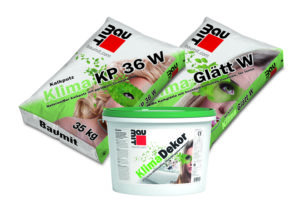 In terms of internal paints and plasters, these should be of sufficient calibre to enhance interior air quality, ensuring it’s not too dry or moist and pollutant-free. Baumit’s healthy living product range, for example, helps stabilise the humidity level of indoor air, quickly absorbing excessive moisture, storing it and, if necessary, quickly releasing it back into the indoor air. The result is a year-round interior climate that offers maximum comfort to the occupier.
In terms of internal paints and plasters, these should be of sufficient calibre to enhance interior air quality, ensuring it’s not too dry or moist and pollutant-free. Baumit’s healthy living product range, for example, helps stabilise the humidity level of indoor air, quickly absorbing excessive moisture, storing it and, if necessary, quickly releasing it back into the indoor air. The result is a year-round interior climate that offers maximum comfort to the occupier.
Perfect complement
Moisture-regulating, mineralic and free from pollutants products within the Baumit Klima range solely regulate the interior climate; being lime-based, these complement natural building materials. Containing a microporous texture, which forms a huge climate-regulating surface with tiny pores, the plasters regulate moisture in a similar way to the human lung. The plasters absorb a large quantity of moisture within a short time, and when room humidity is low, gradually release the moisture back into the surrounding environment. This leads to a significant reduction of humidity peaks in the room and ensures a pleasant and balanced indoor climate. As well as lime sand, which is the main raw material, the bonding agent, slaked lime, is also useful and effective.
The climate-regulating properties of the range means the plasters act as large moisture buffers and consistently ensure a balanced indoor climate, reducing the risk of mildew and mould. The plaster ranges offers anti-mildew and anti-bacterial properties thanks to its high pH value of 12-13. In addition, the anti-static surface means it cannot gather fine dust.
There is no doubting the significance of indoor air quality in creating interiors in which occupiers can live happily, healthily and productively. We breathe an estimated 11,000 litres of air per day, the majority of which will be contained within an interior environment, highlighting the importance of absorbing pollutant-free atmospheres with the potential to instigate and exacerbate long-term health issues. Selecting interior paints and plasters, which facilitate an ideal indoor climate, will help occupant’s breath easier.
Nikolaos Mantelis is Product Manager at global buildings manufacturer Baumit

